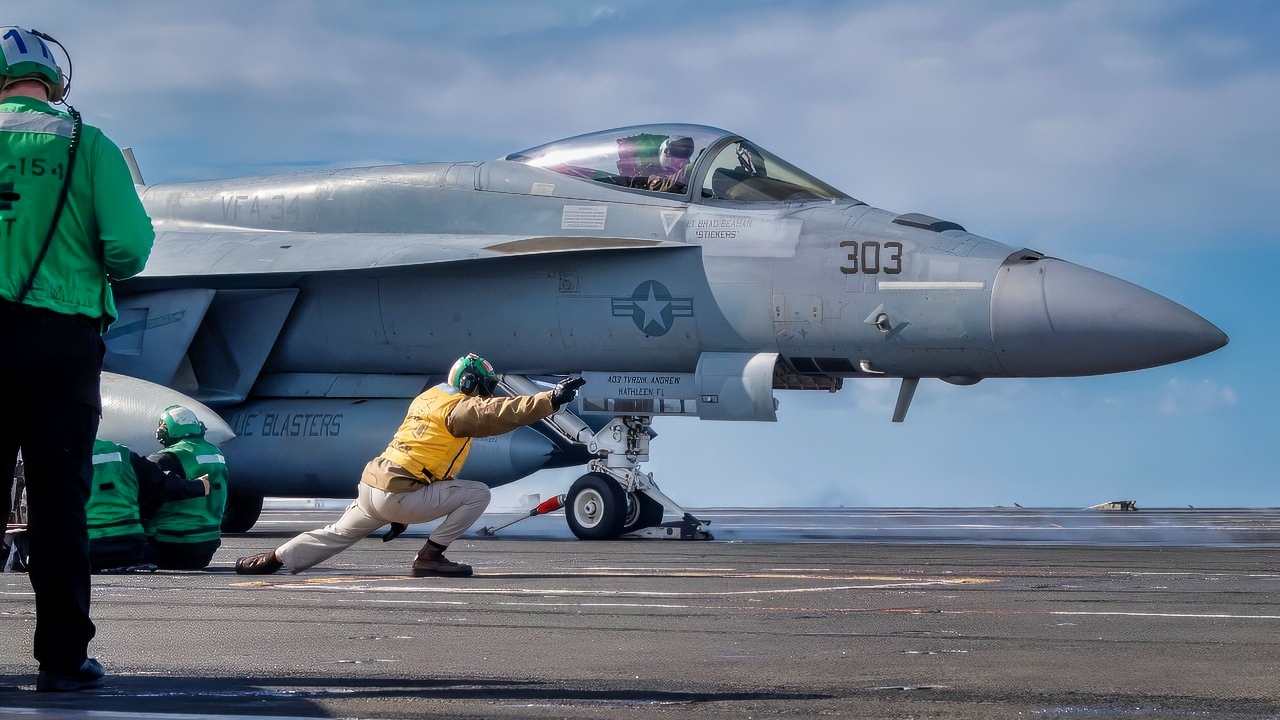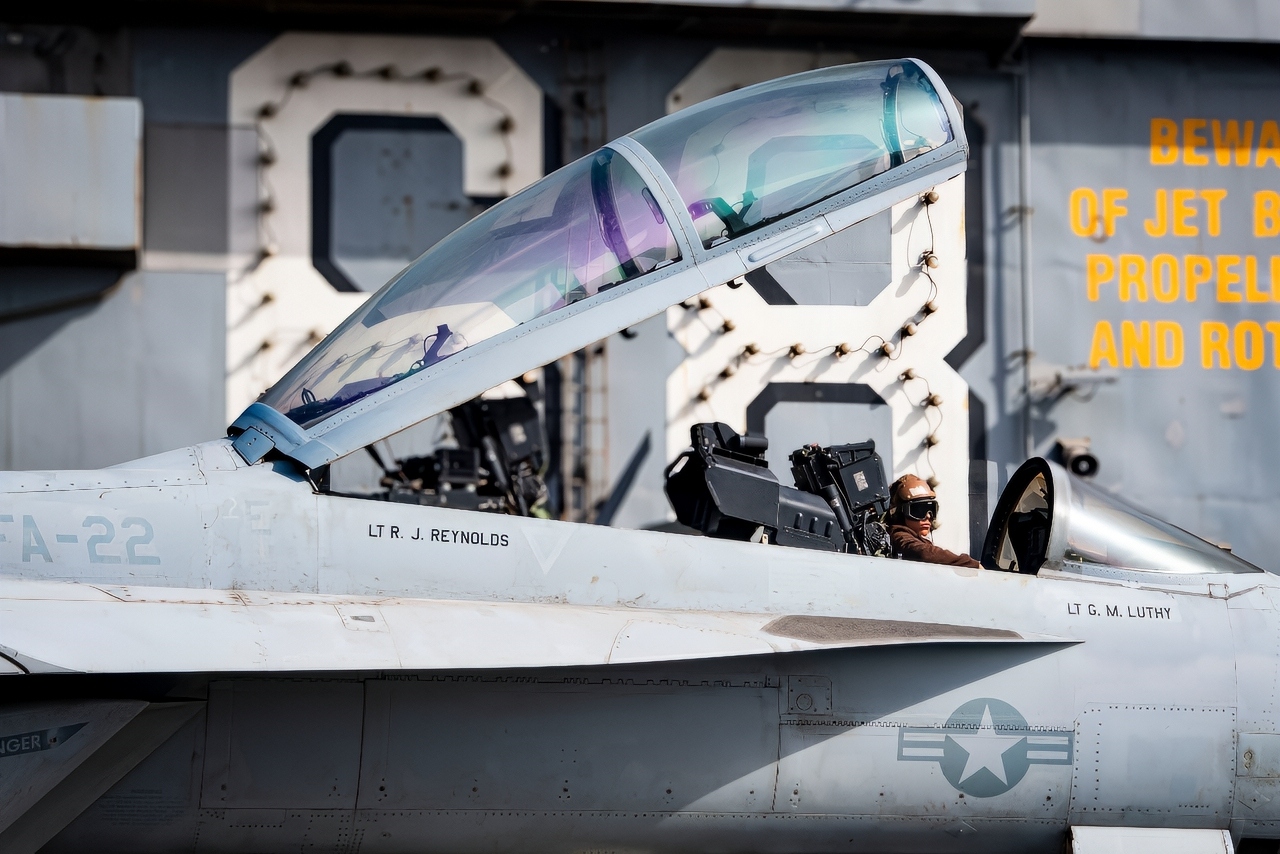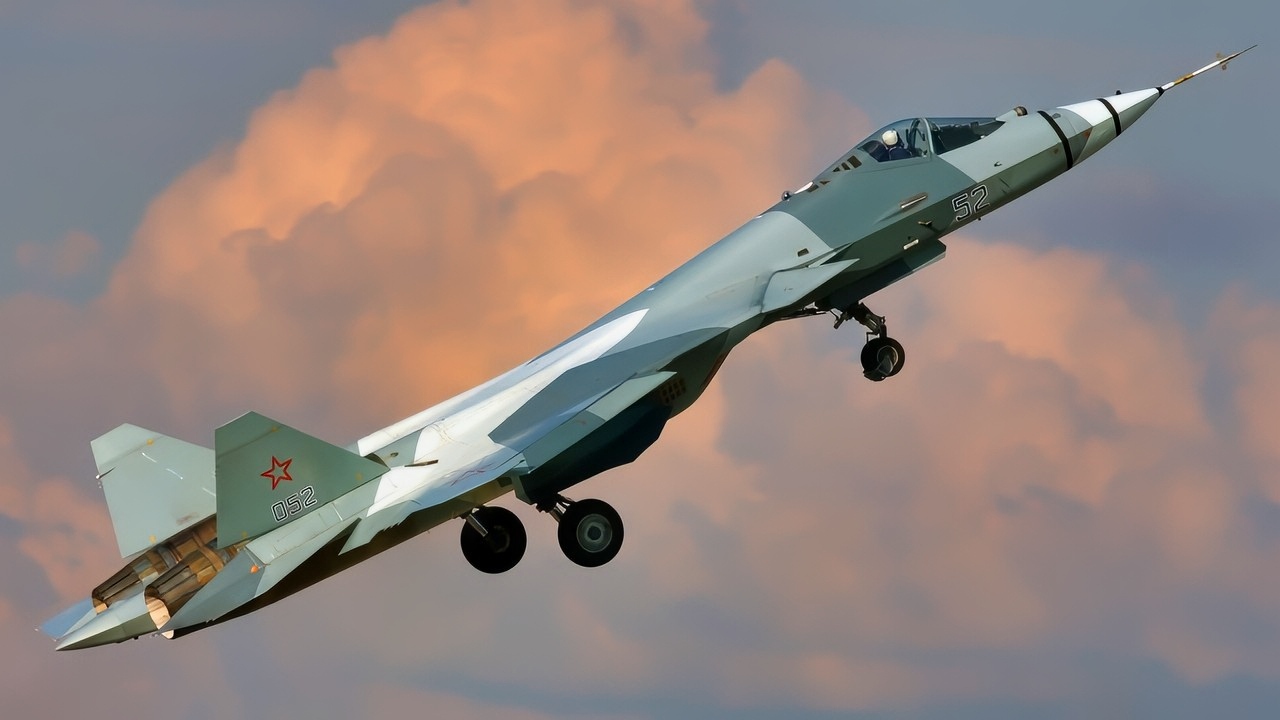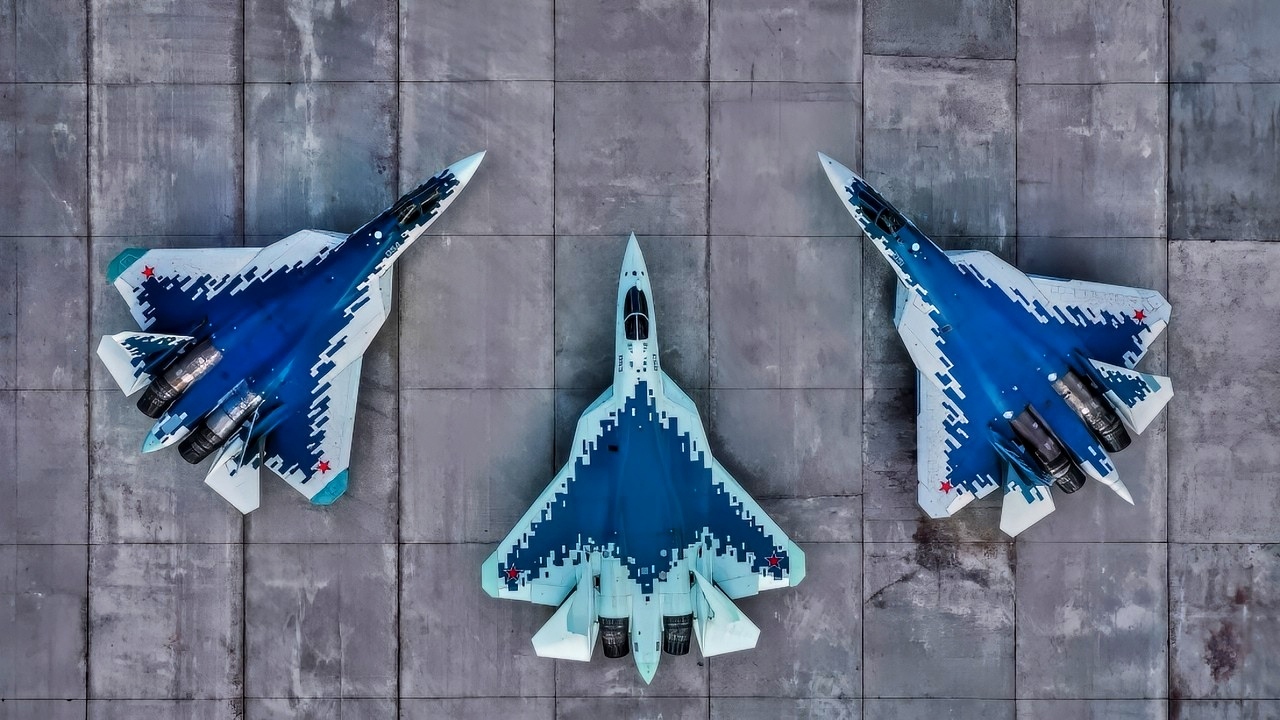Key Points and Summary – Russia’s Su-57 “Felon” brings fifth-gen stealth, supercruise, and thrust-vectoring to the fight, giving it clear advantages in signature and close-in agility over the U.S. Navy’s F/A-18E/F Super Hornet.
-The Hornet isn’t a true stealth jet, but its APG-79 AESA radar, IRST, and tight integration with Growlers and E-2D Hawkeyes make it a formidable, networked multirole platform.

U.S. Navy Lt. Andrew Bentley signals an F/A-18E Super Hornet, assigned to the “Blue Blasters” of Strike Fighter Squadron (VFA) 34, to launch from the flight deck of the Nimitz-class aircraft carrier USS Theodore Roosevelt (CVN 71), Nov. 30, 2023. Theodore Roosevelt, the flagship of Carrier Strike Group Nine (CSG 9), is conducting integrated training exercises in the U.S. 3rd Fleet area of operations. (U.S. Navy photo by Mass Communication Specialist 3rd Class Adina Phebus)
-Dogfight? The Su-57 likely outmaneuvers. Pure beyond-visual-range?
-The Felon’s sensors and long-range missiles could shoot first.
-Real world? With carrier-air-wing support and electronic warfare, the Super Hornet narrows the gap—showing how tactics, networks, and teamwork can offset raw kinematics.
Su-57 Felon Fighter vs. F/A-18 Super Hornet: We Asked An Expert Who Would Win
The Sukhoi Su-57 Felon is Russia’s first and, to date, only fifth-generation stealth fighter currently in use by the Russian Air Force.
Although it has been the subject of criticism among Western analysts, it still boasts an impressive set of capabilities that set it above every other fighter in Russia’s arsenal.
The F/A-18E/F Super Hornet, on the other hand, has been the U.S. Navy’s workhorse for several decades now.
It has received numerous upgrades to increase its avionics, engine performance, and stealth capabilities, making it well-equipped to deal with contemporary threats.
But how would the Super Hornet fare in a battle against Russia’s most advanced stealth fighter?
Does the Super Hornet Have Better Stealth Than the Felon?
The design philosophies behind these two aircraft are fundamentally different. The Super Hornet is built for ruggedness and adaptability, with a focus on multirole capability and ease of maintenance.
It has been the backbone of U.S. Navy carrier aviation since its introduction in the early 2000s. In contrast, the Su-57 was conceived as a stealthy, supermaneuverable platform capable of engaging both air and ground targets while evading detection. It incorporates advanced materials, internal weapons bays, and thrust-vectoring engines to achieve its goals.
The Su-57’s stealth capabilities have been a subject of intense criticism from observers. However, in this scenario, the Felon’s stealth capabilities significantly outclass the F/A-18 Super Hornet. It uses radar-absorbing materials and internal weapons bays to reduce its radar cross-section, although its stealth is not as refined as Western fifth-generation fighters like the F-22 or F-35.
Furthermore, the Su-57 has been confirmed to have participated in multiple combat operations in Ukraine, some of which have taken place behind Ukrainian lines, further vindicating the aircraft’s stealth capabilities.

U.S. CENTRAL COMMAND AREA OF RESPONSIBILITY (July 22, 2025) An F/A-18F Super Hornet, attached to Strike Fighter Squadron (VFA) 22, taxis across the flight deck of the Nimitz-class aircraft carrier USS Nimitz (CVN 68) in the U.S. Central Command area of responsibility. (Official U.S. Navy photo)
While not a true stealth fighter, the F/A-18 Super Hornet also includes some stealth features. It incorporates an EW suite that reduces its signature on specific scanners.
The fighter’s air intake was also redesigned to shield its engine blades from radar waves partially. The fighter also has panel joint serration and edge alignment to direct reflected waves away from the aircraft in uniformly narrow angles.
Despite this, the F/A-18 is still far from an actual stealth aircraft and lacks the comprehensive stealth shaping and other stealth features that the Su-57 and other stealth fighters possess.
Engine Performance: Where the Su-57 Shines
While the Su-57’s engines have been one of its greatest bottlenecks, the fighter still possesses an impressive powerplant. Most production models of the Su-57 are equiped with the AL-31 or AL-41F1 afterburning turbofan engines. This gives the Su-57 a top speed of around Mach 2 and a supercruise speed of Mach 1.3.
The F/A-18 E/F, on the other hand, has a more modest but respectable performance. Equipped with two General Electric F414-GE-400 turbofan engines, the Super Hornet has a top speed of Mach 1.8 with no supercruise capability. Additionally, the F-18 has a lower combat range and service ceiling, which puts it at a distinct disadvantage against the Su-57.
If nothing else, the Russians know how to make supermaneuverable fighter jets. If you’ve seen footage of the Su-57 at any air show, you know what I am talking about. The fighters’ engines are equipped with thrust vectoring mechanisms that allow them to execute incredible mid-air maneuvers. This makes it especially deadly in close-range dogfights where agility is key (though such scenarios are very rare in modern combat).
The F/A-18 is also highly maneuverable thanks to its aerodynamic design and its flight control systems, but less so than the Su-57.
Avionics and Armament
Avionics and sensor systems are another area of contrast. The Su-57 is equipped with a multi-band radar system that includes both X-band and L-band radars, as well as infrared search and track (IRST) and electro-optical targeting systems.
These features allow it to detect and engage targets while maintaining a low radar profile.

Su-57 Felon Stealth Fighter in the Sky. Image Credit: Creative Commons.

Su-57 Felon Screengrab from Russia. Image Credit: X Screengrab.
The Super Hornet uses the AN/APG-79 AESA radar, which is highly regarded for its resolution and electronic warfare capabilities. It also benefits from integration with other platforms like the EA-18G Growler and the E-2D Hawkeye, which enhance its situational awareness and targeting capabilities through networked warfare.
When it comes to weapons and payload, both aircraft are formidable.
The Su-57 can carry up to 10 tons of ordnance, including long-range air-to-air missiles such as the R-77 and R-37M, short-range Infrared-Guided missiles, precision-guided bombs, and a 30mm cannon. Its internal weapons bays allow it to maintain stealth while armed.
The Super Hornet can carry up to 17,750 pounds of ordnance across 11 external hardpoints. Its arsenal includes AIM-9X Sidewinders, AIM-120 AMRAAMs, Harpoon anti-ship missiles, JDAMs, HARM anti-radiation missiles, and a 20mm Vulcan cannon.
While the Super Hornet has a broader multirole arsenal, the Su-57’s stealthy loadout and long-range missiles give it an edge in air-to-air engagements.
Who Wins in 2 Words: A Tossup?
In a close-range dogfight, the Su-57 would likely outmaneuver the Super Hornet due to its thrust vectoring and superior agility. Its ability to perform post-stall maneuvers and maintain control at extreme angles of attack would make it a difficult target.
The Super Hornet, however, is no slouch in visual-range combat.
It features a helmet-mounted cueing system that allows pilots to target enemies off-boresight, giving it a tactical advantage in missile engagements. Still, the Su-57’s maneuverability would likely give it the upper hand in a one-on-one dogfight.
Beyond visual range (BVR) combat presents a more nuanced picture. The Su-57’s long-range missiles and multi-band radar system give it the ability to detect and engage targets from afar. However, the Super Hornet’s AESA radar and integration with electronic warfare platforms, such as the Growler, allow it to operate effectively in a networked environment.
In a purely isolated BVR scenario, the Su-57 might have the advantage. Still, in a real-world combat situation with full support assets, the Super Hornet could leverage its networked capabilities to level the playing field.
About the Author: Isaac Seitz
Isaac Seitz, a Defense Columnist, graduated from Patrick Henry College’s Strategic Intelligence and National Security program. He has also studied Russian at Middlebury Language Schools and has worked as an intelligence Analyst in the private sector.
More Military
F-15EX Eagle II vs. Eurofighter Typhoon: Get the Popcorn Ready
The B-21 Raider Bomber: China and Russia Should Be Afraid
A U.S.-China War Over Taiwan: Who Wins?
F/A-XX: How Many Stealth Fighters Does the U.S. Navy Need?
China’s J-36 Stealth ‘Something’ vs. America’s F-22 Raptor: Who Wins?










